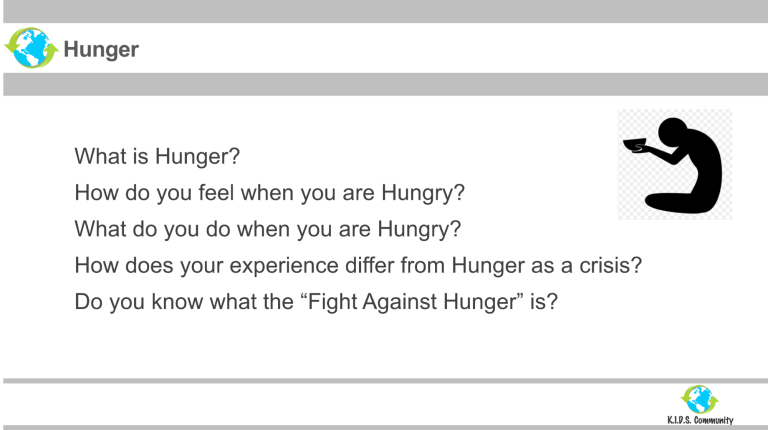Addressing Food Insecurity
Food insecurity refers to the lack of reliable access to sufficient, nutritious food for an active and healthy life. It is a complex and multifaceted issue that affects individuals and communities worldwide. Food insecurity can manifest in various forms, including chronic hunger, malnutrition, and inadequate access to essential nutrients.
Global statistics on food insecurity highlight the scale of the problem:
- According to the Food and Agriculture Organization (FAO) of the United Nations, as of the latest available data in 2021, an estimated 768 million people around the world were suffering from chronic hunger.
- The World Food Programme (WFP) reported that in 2020, the number of people experiencing acute food insecurity, requiring urgent humanitarian assistance, reached 155 million in 55 countries.
- The Global Report on Food Crises 2021, produced by multiple international organizations, revealed that conflict, climate change, and economic instability were key drivers of acute food insecurity. In 2020, over 155 million people faced acute food insecurity, an increase of 20 million compared to 2019.
- The impact of the COVID-19 pandemic exacerbated food insecurity. Disruptions in food supply chains, economic downturns, and restrictions on movement contributed to an increase in the number of people facing hunger.
While specific statistics change over time, the problem of food insecurity is a persistent issue locally, nationally and globally.
Addressing Food Insecurity In Our Local Community

Hunger is defined by the United Nations as the periods when people experience severe food insecurity—meaning that they go for entire days without eating due to lack of money, access to food, or other resources.
- 828M people around the world go to bed hungry every night
- 3.1B people globally can not afford a healthy diet
Learn more about hunger and the United Nations Sustainable Development Goal: Zero Hunger at www.un.org.

Did you know ...
•North Carolina ranks 10th in the United States for food insecurity.
•Almost 1 in 5 children experience hunger on a regular basis.
•The root cause of hunger lies in poverty. (Do you know what poverty is?)
•16.5 of children in Wake County (41,000) live in food insecure homes.

Did you know ...
•15% 159,740 people are food insecure in Wake County.
•22% 55,420 children under 18 are food insecure in Wake County.
•32% 53,852 children receiving free/reduced school meals in Wake County.

Each year, K.I.D.S. Community, in collaboration with local partners, participate in food drives with donations provided to the Food Bank of Central and Eastern North Carolina.
In our first 2 years, K.I.D.S. Community and our partners donated over 1,750 pounds of food and personal care items through our activities.
We will continue our annual food drive and hope to further build our portfolio of activities to address food insecurity in our community, including exploring opportunities to provide support for summer lunch programs. CONTACT US if you are interested in supporting this program!
Addressing food insecurity requires comprehensive and localized strategies that consider the unique socio-economic, cultural, and environmental factors of each region. In collaboration with members of our local community, KCI has developed a portfolio of activities, engagements, and partnerships to address local food insecurity.
Opportunities for Near-term Impact
- Research and Data Collection: Conduct local research on the specific causes and dynamics of food insecurity in the community to inform targeted interventions and monitor progress over time.
- Food Banks and Pantries: Support and expand local food banks and pantries to ensure immediate access to food for those in need. Encourage donations from local businesses, farms, and individuals.
- School Meal Programs: Strengthen and expand school meal programs to ensure that children have access to nutritious meals, which can positively impact their health and educational outcomes.
- Community Meal Programs: Organize community meal programs, soup kitchens, or food-sharing initiatives to provide hot meals for vulnerable populations, such as the homeless or low-income families.
- Community Empowerment: Foster community engagement and participation in decision-making processes to ensure that interventions are culturally sensitive and responsive to local needs.
- Food Recovery Programs: Establish partnerships with local businesses and restaurants to recover surplus food that would otherwise go to waste and redistribute it to those in need.
Opportunities for Long-term Impact
- Government and NGO Partnerships: Collaborate with local governments, non-governmental organizations (NGOs), and community groups to develop and implement comprehensive strategies addressing food insecurity.
- Policy Advocacy: Advocate for policies that address the root causes of food insecurity, such as poverty, inequality, and lack of access to education and healthcare.
- Microfinance and Entrepreneurship Support: Provide microfinance and support for local entrepreneurs interested in starting food-related businesses, such as small-scale farming, catering, or food processing.
- Educational Programs: Implement educational programs on nutrition, budgeting, and cooking skills to empower individuals and families to make healthier food choices with limited resources.
- Emergency Preparedness and Response: Develop and implement emergency preparedness plans to respond swiftly to natural disasters, economic downturns, or other crises that may exacerbate food insecurity.
© Copyright. All rights reserved.
We need your consent to load the translations
We use a third-party service to translate the website content that may collect data about your activity. Please review the details and accept the service to view the translations.
